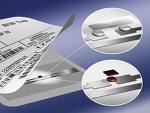Technology and Automation
 Definition of Supply Chain Consulting: The management discipline of providing informed impartial advice to business enterprises in relation to improving the performance of sales, operations planning, manufacturing, inventory, and warehousing. A supply chain or logistics network is the system of organizations, people, technology, activities, information and resources involved in moving a product or service from supplier to customer.
Definition of Supply Chain Consulting: The management discipline of providing informed impartial advice to business enterprises in relation to improving the performance of sales, operations planning, manufacturing, inventory, and warehousing. A supply chain or logistics network is the system of organizations, people, technology, activities, information and resources involved in moving a product or service from supplier to customer.
Definition of Wireless: Radio transmission through the air. Wireless is a very generic term that refers to numerous forms of transmission that do not use metal wires or optical fibers. They include AM and FM radio, TV, cell phones, portable phones/PDA’s and Wireless LANs. Various techniques are used to provide wireless transmission, including infrared line of sight, cellular, microwave, satellite, packet radio, narrowband and spread spectrum.
Definition of Barcode: A computer coding system that uses a printed pattern of lines or bars to identify alphanumeric information. Bar codes are read by optically scanning the printed pattern and using a computer program to decode the pattern. In a linear bar code system, the code itself contains no information about the item to which it is assigned but represents a string of identifying numbers or letters. When the code is read by an optical scanner linked to a computer, the computer can input data directly into a field of a record or tie the information back to a database to retrieve and verify information against an entire record. Often times this information contained in the barcode is referred to as a “license plate” or identifying code.
 So-called two-dimensional (2D) bar codes permit the encoding of information about an item in addition to an identifying code. They are used more as Portable Data Files. In a 2D bar code, or directions, are used for recording and reading the codes and the bar size is reduced, increasing the space available for data in the way that a column of words improves on a column of letters.
So-called two-dimensional (2D) bar codes permit the encoding of information about an item in addition to an identifying code. They are used more as Portable Data Files. In a 2D bar code, or directions, are used for recording and reading the codes and the bar size is reduced, increasing the space available for data in the way that a column of words improves on a column of letters.
Definition of RFID: A data collection technology that uses electronic tags for storing data. The tag, also known as an "electronic label," "transponder" or "code plate," is made up of an RFID chip attached to an antenna. Transmitting in the kilohertz, megahertz and gigahertz ranges, tags may be battery-powered or derive their power from the RF waves coming from the reader. Radio frequency identification (RFID) technology helps today's companies track and control goods as they move through the supply chain. But the broad investments required for RFID-enablement are risky, since standards for the technology are still evolving and there are high costs involved in maintaining non-integrated RFID systems.
Advantages of RFID Versus Barcodes
RFID tags and barcodes both carry information about products. However, there are important differences between these two technologies:
- Barcode readers require a direct line of sight to the printed barcode; RFID readers do not require a direct line of sight to either active RFID tags or passive RFID tags.
- RFID tags can be read at much greater distances; an RFID reader can pull information from a tag at distances up to 300 feet. The range to read a barcode is much less, typically no more than twenty feet.
- RFID readers can interrogate, or read, RFID tags much faster; read rates of forty or more tags per second are possible. Reading barcodes is much more time-consuming; due to the fact that a direct line of sight is required, if the items are not properly oriented to the reader it may take seconds to read an individual tag. Barcode readers usually take a half-second or more to successfully complete a read.
- Line of sight requirements also limit the ruggedness of barcodes as well as the reusability of barcodes. (Since line of sight is required for barcodes, the printed barcode must be exposed on the outside of the product, where it is subject to greater wear and tear.) RFID tags are typically more rugged, since the electronic components are better protected in a plastic cover. RFID tags can also be implanted within the product itself, guaranteeing greater ruggedness and reusability.
- Barcodes have no read/write capability; that is, you cannot add to the information written on a printed barcode. RFID tags, however, can be read/write devices; the RFID reader can communicate with the tag, and alter as much of the information as the tag design will allow.
- RFID tags are typically more expensive than barcodes, in some cases, much more so.
 Definition of Biometrics: Biometrics are automated methods of recognizing a person based on a physiological or behavioral characteristic. They include fingerprints, retinal and iris scanning, hand and finger geometry, voice patterns, facial recognition, and other techniques. The biometric technologies are becoming the foundation of an extensive array of highly secure identification and personal verification solutions.
Definition of Biometrics: Biometrics are automated methods of recognizing a person based on a physiological or behavioral characteristic. They include fingerprints, retinal and iris scanning, hand and finger geometry, voice patterns, facial recognition, and other techniques. The biometric technologies are becoming the foundation of an extensive array of highly secure identification and personal verification solutions.
Biometrics is expected to be incorporated in solutions to provide for Homeland Security including applications for improving airport security, strengthening our national borders, in travel documents, visas and in preventing ID theft. Now, more than ever, there is a wide range of interest in biometrics across federal, state, and local governments. Congressional offices and a large number of organizations involved in many markets are addressing the important role that biometrics will play in identifying and verifying the identity of individuals and protecting national assets.
There are many needs for biometrics beyond Homeland Security...
- Enterprise-wide network security infrastructures
- Secure electronic banking, investing and other financial transactions
- Retail sales
- Law enforcement
- Health and social services
Biometric-based authentication applications include workstation, network, and domain access, single sign-on, application logon, data protection, remote access to resources, transaction security and Web security. Trust in these electronic transactions is essential to the healthy growth of the global economy. Utilized alone or integrated with other technologies such as smart cards, encryption keys and digital signatures, biometrics are set to pervade nearly all aspects of the economy and our daily lives. Utilizing biometrics for personal authentication is becoming convenient and considerably more accurate than current methods (such as the utilization of passwords or PINs). This is because biometrics links the event to a particular individual (a password or token may be used by someone other than the authorized user), is convenient (nothing to carry or remember), accurate (it provides for positive authentication), can provide an audit trail and is becoming socially acceptable and inexpensive.
Voice Recognition is a technology which allows a user to use his/her voice as an input device. Voice recognition may be used to dictate text into the computer or to give commands to the computer (such as opening application programs, pulling down menus, or saving work). Older voice recognition applications require each word to be separated by a distinct space. This allows the machine to determine where one word begins and the next stops. These kinds of voice recognition applications are still used to navigate the computer's system, and operate applications such as web browsers or spread sheets. Newer voice recognition applications allow a user to dictate text fluently into the computer. These new applications can recognize speech at up to 160 words per minute. Applications that allow continuous speech are generally designed to recognize text and format it, rather then controlling the computer system itself.
In an Economic Downturn companies can no longer afford to keep people with our subject matter expertise and experience on the payroll - so we can fill those voids within Corporations on a contract basis.
